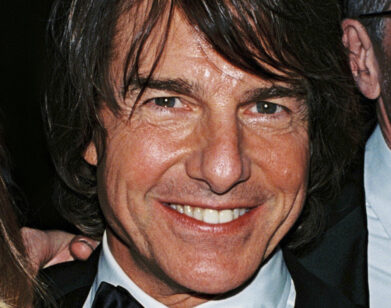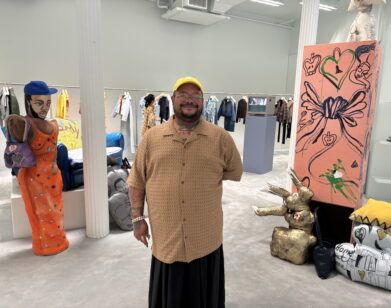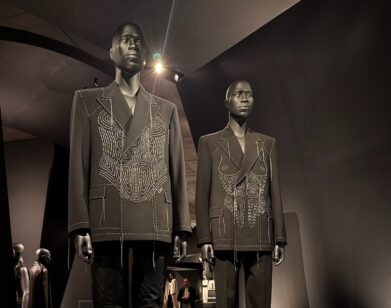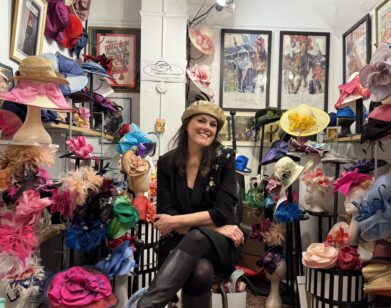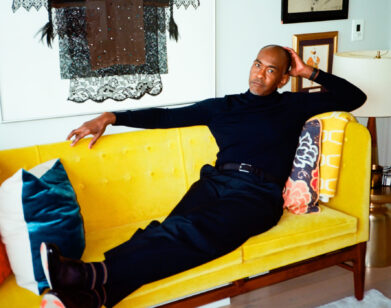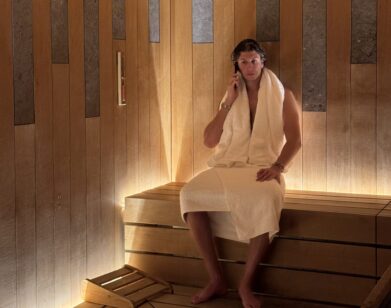Berlin Fashion Week Round-Up
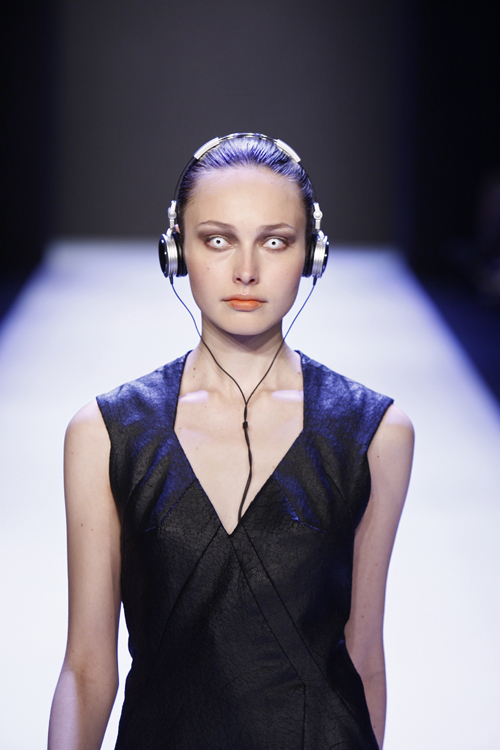
Julia Stegner, spokesmodel for Mercedes Benz Berlin Fashion Week
Beyond the generic chirpy PR buzz generated by hired celebrities and talking heads, the fifth edition of Mercedes Benz’s Fashion Week genuinely was something worth chirping about. The city’s up-and-coming designers fulfilled their promise from previous seasons. Berlin reached a new maturity this season thanks to a combination of factors. IMG, the week’s organizers, arranged the events well, and earned few complaints and a lot of praise from visitors and locals for having the most crowded calendar in the week’s history run smoothly. After five seasons, returning designers seemed more confident about finding their footing, such that Berlin is now more than a laboratory of low-budget cool. The global economy has changed the definition of glamour and the fact that Berlin has neither the history nor the funds to entertain and dazzle on the level of Parisor New York is now, perhaps, to its advantage. The time is ripe, eh?
And every successful Fashion Week has some events where the glitz, glamour and brand generosity are the main attraction. The catwalk show and Bar-B-Que for Hugo Boss Orange hosted a thousand guests in an empty factory located in Schoeneweide, the rough right-wing neighborhood on the outskirts of the city. Adrian Brody, Sienna Miller, Jade Jagger, Justin Timberlake, and Suzy Menkes watched as such top international models as Siri Tollerod, Eniko Mihalik, Kasia Struss, Vlada, and Lakshimi Menon walked onto the catwalk from behind a giant airplane engine fan. Afterwards, the factory’s sprawling back garden by the lake was transformed into an all-night barbeque, under the glow of the new Boss Orange logo, which was projected onto an adjacent building, the low, orange moon hanging like a punctuation point under it. “How many prayers did it take to have that happen?” I asked an IMG representative. “Many, and a few virgins too,” came the reply. “But it was worth it.” (LEFT: AT BOSS ORANGE)
AT LALA; MICHALSKY
It was a much-needed atmospheric boost for the collection. Designed by Eyan Allen, the women’s wear included faded denim prairie skirts, fuchsia jean-jackets and a baggy knee-length denim jumpsuit. Men wore loose cropped jean shorts, denim faded shirts and jackets. The garments were potentially practical items that anybody would be pleased to find in the bottom of their closet. More overtly glamorous events like the Escada Pink Party at Bodemuseum and Michalsky’s impressive presentation on the stage where the Producers is normally being shown in the Friedrichstadtpalast drew media attention, outsider envy and goodwill from the well-fed and highly-hydrated guests, providing a platform for the city’s more cerebral and thought-provoking designers with smaller labels instead of big brands.
A favorite of resident critics and chic locals, longstanding local talent Leyla Piedayesh of Lala Berlin presented a stellar collection of slinky, sensual and masterfully constructed dresses, jackets, jumpsuits, scooped necked silk tank tops and Piedayesh’s signature wide knitted sweaters in white, gold, sand and shocking pink. The collection combined the louche fluidity of vintage Halston with Piedayesh’s innovative use of strips of zippers as straps and prints.
Zerlina von dem Bussche’s show for her Sisi Wasabi label was also a fine meeting point between an opulent event and a wearable aesthetic. As guests entered an elegantly laid-out banquet hall in the opulent Hotel de Rome, they assumed the models would be walking between tables. But screen at the end of the hall: The next round of speculation was a viewing of one of the trendy promotional films designers are currently doing in lieu of a catwalk show. But instead, as lobster, white chocolate truffles and candy-hued cocktails were served, the screen showed a live feed of models walked fearlessly over the feast, on a catwalk on top of the hallway’s gilded skylight. The collection over-head was itself hardly over-the-top, although there was an eerie issue of heavenly inspiration. Its military blazers, electrifying prints, gold loafers and zipper details paid obvious homage to the just-deceased King of Pop. (LEFT: AT SISI WASABI)
Visiting designer Kai Kühne’s show of black and white sculpted dresses and jumpsuits worn by models with robotic white or black contact lenses was the ideal climax for the week. The German designer, formerly a member of AsFour, closed fashion week with his show at the Babelplatz tent of magnificently constructed clothes, with sharp geometric overlapping panels, inspired by Berlin’s late-nineties techno club scene. A few of the models had headphones with the cord suggestively descending down their neckline, as if listening to the sounds from their own bodies. Peaches writhed in the front row next to her two snaky British male companions while wearing a white origami-like top and skirt from the collection better than any of the models. Despite the wild youth references, the collection demonstrated the height of grown-up skill and self-mastery by its remarkable tailoring. (RIGHT: AT KAI KUHNE)
The final song to play at the Babelplatz tent at the end of Kühne’s structured and inspiring show was The Carpenters’ “We’ve Only Just Begun.”

